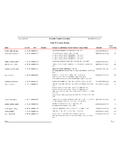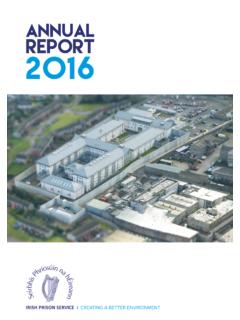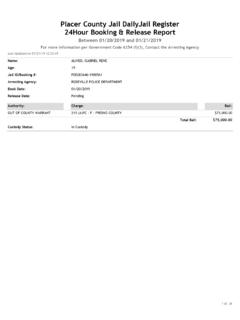Transcription of EY regulatory reporting brief FR Y-15 Banking Organization ...
1 November 2016. EY regulatory reporting brief FR Y-15 Banking EY's regulatory reporting brief explores Federal Reserve Organization systemic regulatory reporting , highlighting report requirements, recent news Risk report and updates, and identifying common reporting challenges. Background and key considerations In focus: report summary On June 1, 2016, the Federal Reserve Board (FRB) published in the Federal Register What is the FR Y-15? Notice (FRN) a final rule, providing guidance on the regulatory reporting requirements for In response to the financial crisis, the Basel Committee on Banking Supervision US intermediate holding companies (IHCs) of (BCBS) developed data points to be used to assess the systemic risk of global foreign Banking organizations (FBOs).
2 Systemically important banks (G-SIBs). This required that the FRB classify banks IHCs are expected to ready their data sourcing and reporting capabilities to file based on systemic importance. In connection with the approach set out by the the FR Y-15 on a quarterly basis, effective BCBS, the Federal Reserve (Fed) collects FR Y-15 data to assess seven components September 30, 2016, and meet the report 's granular transactional data requirements of a bank's systemic risk profile: size, interconnectedness, substitutability, (with additional time given for the first filing).
3 Complexity, cross-jurisdictional activity, ancillary indicators and a new schedule, This brief explores reporting challenges that Schedule G, designed to capture short-term wholesale funding information the FR Y-15 poses to current Bank Holding Company (BHC) filers and considerations for (effective December 31, 2016). the new panel of IHC reporters. The Fed uses this data to monitor the systemic risk profile of the institutions that are subject to Enhanced Prudential Standards (EPS) and supports: Filing criteria The Basel Committee in identifying G-SIBs and in determining the additional BHCs and IHCs with total consolidated capital surcharge for G-SIBs assets of $50 billion or more US-based organizations designated as global The Fed with the identification of domestic systemically important systemically important banks financial institutions Filing frequency The assessment of systemic risk implications of proposed mergers The FR Y-15 is to be filed quarterly, as of and acquisitions the last calendar day of the month (March.)
4 June, September and December). The quarterly filings are due 50 days (65 days for Q4) after the as-of date. FR Y- 15 banking organization systemic risk report : background and key considerations report highlights In 2014, certain organizations were asked to file a quantitative impact study (QIS) version of the FR Y-15 report form. The QIS was intended to support regulators in assessing the viability and timeline for system risk reporting required of G-SIBs. Since then, the report form has included a number of changes: Consolidation rules.
5 Per the QIS, FBOs were asked to report data for all US branches and subsidiaries, distinguishing among balances of US branches, subsidiaries and branch-to-subsidiary transactions. The current report form requires consolidated reporting on the same basis as the FR Y-9C ( , at the BHC or IHC level). Filing frequency. reporting was revised to quarterly instead of annually. Additional requirements. A new schedule, Schedule G, which captures wholesale funding data, was incorporated into the report ;. several items were added to other schedules.
6 The FRB's June 2016 Federal Register Notice provided further guidance on the regulatory reporting requirements for US IHCs. The FRN informed first-time IHC filers of the FR Y-15 that they would be permitted to file their first report by December 5, 2016 (65 days after the September 30, 2016, as-of date). Additionally, IHCs are allowed to file reasonable estimates, consistent with the FR Y 15 report reporting requirements. The reported information is made public with some exceptions for Schedule G for the first reporting date after the final liquidity coverage ratio disclosure standard has been implemented.
7 Confidential treatment may be requested on a case-by-case basis. 2 | EY regulatory reporting brief November 2016. FR Y- 15 banking organization systemic risk report : background and key considerations Overview of schedules 1. Schedule A Size Indicator The current FR Y-15 consists of seven schedules, including the new Schedule A collects information on bank exposures to derivatives, Schedule G (effective December 31, 2016), that collect information securities financial transactions (SFTs), other on-balance sheet on the systemic risk footprint of US-based G-SIBs and holding assets, and off-balance sheet items by credit conversion factors (CCF).
8 Companies with total consolidated assets of $50 billion or more. Advanced approach Banking organizations must report data using Data is used to determine the degree of risk in bank portfolios and averages; unless otherwise indicated, Banking organizations that do understand the effect on global markets. not use the advanced approach may report using either averages or point-in-time values. Note that even though the final IHC rule stated Below is an overview of each of the current report schedules. that IHCs are not subject to advanced approaches risk-based capital rules, IHCs that meet the threshold for advanced approaches Banking Schedules organizations are still subject to reporting requirement for advanced approach Banking organizations includes averages on Schedule A.
9 1. Schedule A Size Indicator 2. Schedule B Interconnectedness Indicators 2. Schedule B Interconnectedness Indicators 3. Schedule C Substitutability Indicators Schedule B collects information on bank assets of and liabilities to other financial institutions (based on immediate counterparty). 4. Schedule D Complexity Indicators 5. Schedule E Cross-Jurisdictional Activity Indicators 3. Schedule C Substitutability Indicators 6. Schedule F Ancillary Indicators Schedule C collects information on payments sent by the Banking Organization , assets held under custody and data on 7.
10 Schedule G Short-Term Wholesale Funding Indicator (effective December 31, 2016) underwriting activity. 4. Schedule D Complexity Indicators Schedule D collects information on the over-the-counter (OTC) derivatives, available-for-sale and trading securities. 5. Schedule E Cross-Jurisdictional Activity Indicators Schedule E collects information on cross-border claims (on an ultimate risk basis) and liabilities. 6. Schedule F Ancillary Indicators Schedule F collects information on select balance sheet and income statement items. 7. Schedule G Short-Term Wholesale Funding Indicator (effective December 31, 2016).
















